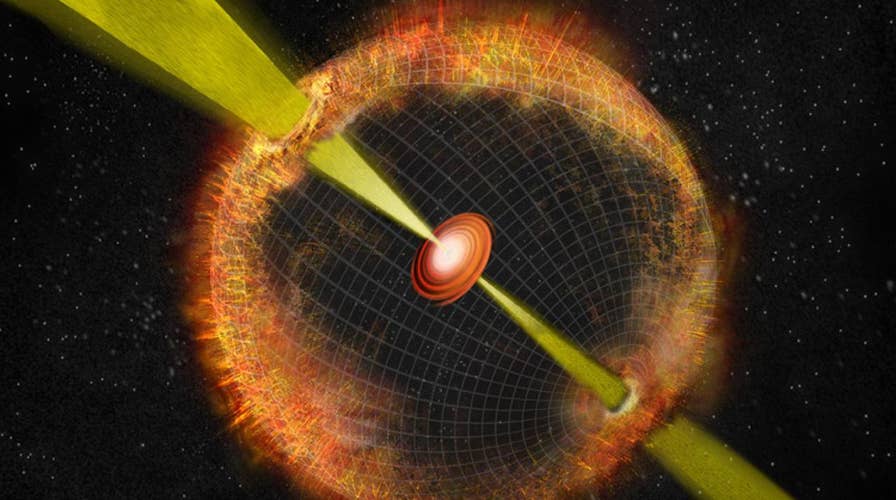Mysterious 'ghost' radio emissions have been found
Researchers have found ‘orphan’ gamma-ray bursts. What’s causing them?
Mysterious "ghost" radio emissions have been spotted by researchers, some that have lasted for 25 years, only to fade away and then return. While the "ghost" emissions could be extremely common, the cause is still unknown, according to experts.
University of California at Berkeley Assistant Research Astronomer Casey Law believes the emissions could be the "afterglow of the explosion of a massive star, which would have emitted an undetected long-duration gamma-ray burst."
“We believe we are the first to find evidence for gamma-ray bursts that could not be detected with a gamma-ray telescope,” said Law in a statement. “These are known as ‘orphan’ gamma-ray bursts, and many more such orphan GRBs are expected in new radio surveys that are now underway.”
WE NEED TO KEEP LOOKING FOR ALIENS, SCIENTISTS TELL SENATORS
Gamma-ray bursts are very rarely seen in the universe because the source of them, a relativistic jet of material emerging from the explosive merger, need to be pointing directly at the Earth. The odds of that happening and being seen by NASA's Fermi Gamma-ray Space Telescope are around 1 percent.
The afterglow, which can last two and a half decades, could help astronomers find other events just like this. It may also help them find more gamma-ray bursts and understand what happens when a massive stellar explosion happens and what is left in the aftermath of the explosion.
Law believes that the explosion produces "a rapidly spinning and highly magnetized neutron star, known as a magnetar."
The research was published in the journal Astrophysical Journal Letters.
The radio source, FIRST J141918.9+394036, is now too faint to see in the sky, but it is still able to be detected by large telescopes. It was first spotted by the Very Large Array in New Mexico in the early 1990s, when it had its peak brightness.
MYSTERIOUS RADIO SIGNAL FOUND IN SPACE AND ASTRONOMERS AREN'T SURE WHERE IT'S COMING FROM
"We thought, 'That was weird','' Law said, referring to the fact it was still detectable.
“Its peak brightness in the ‘90s was quite high, so it was a big, big change: about a factor of 50 decrease in brightness. We basically went through every radio survey, every radio dataset we could find, every archive in the world to piece together the story of what happened to this thing," Law added.
There were 10 other radio observations discovered in that portion of the sky, Law and his colleagues found, which allowed them to find the radio emission and then see its disappearance. It's probable the radio emissions first reached the planet in 1992 or 1993, the researchers concluded, with peak brightness coming in 1994. It eventually became invisible in 2017, according to the 2017 Very Large Array Sky Survey.
The object is 284 million light-years away from Earth in a dwarf galaxy that is still forming stars, a phenomenon associated with fast radio bursts.
MASSIVE GLOWING 'ROGUE' PLANET SPOTTED 'DRIFTING' IN SPACE
“Part of the story is about how much of the sky is changing, even on this long time scale, and how hard it is to test that,” he said. “It is also partly about the value of new data science techniques. Pulling out information from these rich and diverse data sets is helping us do good science.”
Follow Chris Ciaccia on Twitter @Chris_Ciaccia

